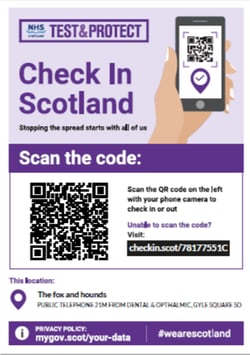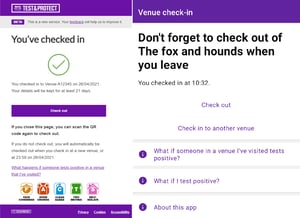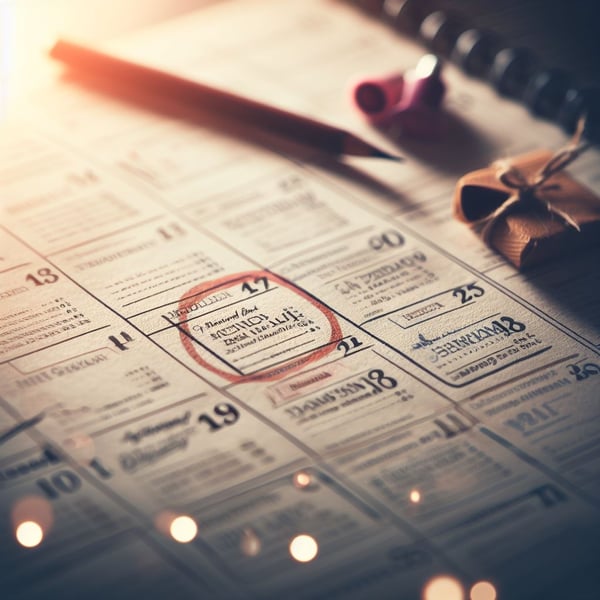NHS Scotland develops track and trace app with Microsoft
NHS Scotland has worked with Microsoft to develop a COVID-19 track and trace system for businesses.
 The solution uses QR codes that, when scanned with a phone or tablet, takes the user to a secure Government website where they can fill in their name and contact details. An app has also been created, allowing people to save their contact details to reduce the hassle of filling out the form every time they enter a venue.
The solution uses QR codes that, when scanned with a phone or tablet, takes the user to a secure Government website where they can fill in their name and contact details. An app has also been created, allowing people to save their contact details to reduce the hassle of filling out the form every time they enter a venue.
It comes as restrictions put in place to combat the spread of Coronavirus start to ease across Scotland. With more people able to socialise and visit pubs and restaurants in the coming weeks, NHS Scotland needed a digital solution that would allow them to quickly understand where people newly-diagnosed with COVID-19 had visited.
 “The collection of contact information is required by the Scottish government as part of their efforts to tackle the spread of COVID-19. However, many businesses are ill-equipped to handle the collection of that data, the security that needs to be in place to handle it and searching through it when NHS Scotland needs to trace someone. Some were using pen and paper to record that information, which isn’t ideal,” explained Deryck Mitchelson, Director of Digital and Security at NHS Scotland.
“The collection of contact information is required by the Scottish government as part of their efforts to tackle the spread of COVID-19. However, many businesses are ill-equipped to handle the collection of that data, the security that needs to be in place to handle it and searching through it when NHS Scotland needs to trace someone. Some were using pen and paper to record that information, which isn’t ideal,” explained Deryck Mitchelson, Director of Digital and Security at NHS Scotland.
“The QR code solution is seamless and removes all that work from business owners. They register for the initiative and place the QR code poster in their workspace where customers can scan it. They don’t have to do anything else, and can focus on providing great service,” he continued.
Without the QR code, tracing a COVID-19 patient becomes a very slow, unreliable and manual process. NHS tracers call businesses that the patient has visited; those businesses have to find that person’s contact details as well as the details of everyone else who was there that day and pass them back to the NHS so the task of tracing those people can begin.
Mitchelson added: “We know that a delay in contact tracing can help the spread of the virus. If it takes three days to get in contact with someone, they could have the virus and be potentially spreading it. If a patient has scanned a QR code, we can understand where they have been within minutes. The quicker you track and trace, the quicker you can break the transmission chain.”
 The contact information from the QR codes goes straight into NHS Scotland’s cloud-based data lake (running on Microsoft Azure). That data is fully encrypted and only available to NHS Scotland contact tracers who have the right digital key. They must get approval to access the data, and can only view the information they have asked to see. The system is fully auditable and shows what information was accessed and when. After a certain number of days the data is automatically deleted.
The contact information from the QR codes goes straight into NHS Scotland’s cloud-based data lake (running on Microsoft Azure). That data is fully encrypted and only available to NHS Scotland contact tracers who have the right digital key. They must get approval to access the data, and can only view the information they have asked to see. The system is fully auditable and shows what information was accessed and when. After a certain number of days the data is automatically deleted.
As Scotland emerges from lockdown measures, Mitchelson hopes the QR code service can be used in a variety of sectors.
“We can see the QR codes being used in bars, pubs and restaurants, but also churches, care homes, music venues and ferry terminals,” he said. “A lot of people use ferries to get to some of the islands in Scotland. Again, the ferry operators don’t have to worry about data collection and management, they just put up a QR code poster and the passengers scan it when they board.”
NHS Scotland built the QR solution in such a way that it could cope with hundreds of thousands of interactions per minute.





